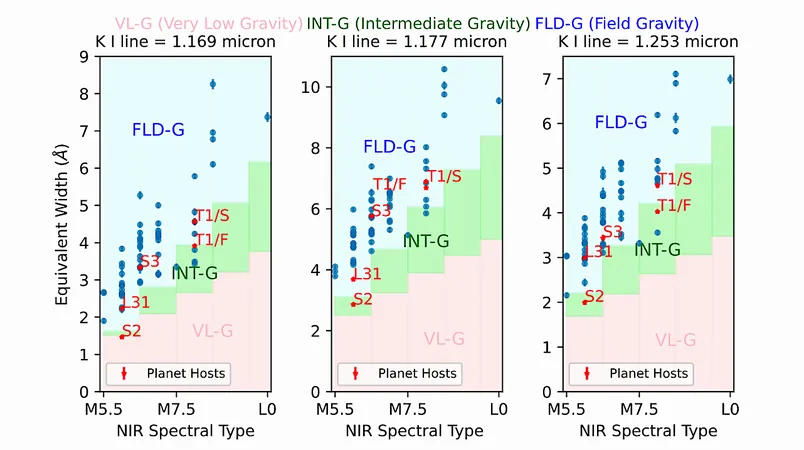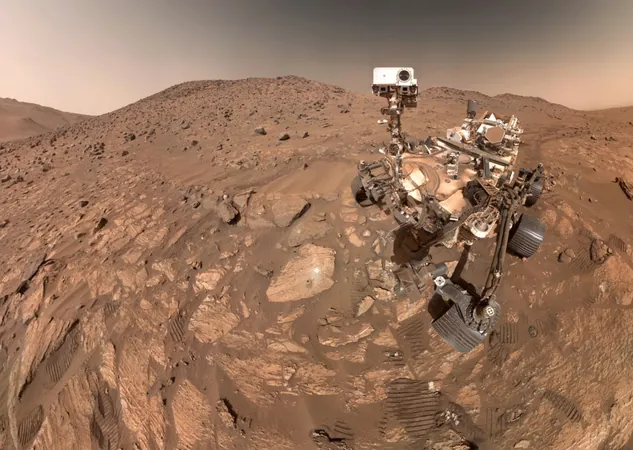
Unlocking the Secrets of Ultracool Dwarfs: Do Metallicity and Gravity Affect Planetary Presence?
2025-06-30
Author: Olivia
Revolutionary Insights into Ultracool Dwarfs
In an exciting new study, researchers delve deep into the cosmic mysteries surrounding ultracool dwarfs—stars that reside at the fringes of stellar classification. This analysis encompasses 57 of these enigmatic stars, ranging from spectral types M5.5 to L0, including notable exoplanet hosts like TRAPPIST-1 and LHS 3154.
Spectroscopy: A Window into Stellar Secrets
Utilizing advanced near-infrared spectroscopy across the 0.9 to 2.4 micron range, scientists analyzed the spectral signatures of these ultracool dwarfs. Core to their investigation were crucial gravity-sensitive indices such as iron hydride (FeH) absorption and various alkali lines that hint at the stars' atmospheric composition and dynamics.
Gravity and Planetary Occurrence: A Complex Relationship
While all four planet-bearing stars showcased intriguing spectral characteristics consistent with intermediate surface gravity, statistical modeling suggests there isn't a straightforward relationship between stellar gravity classifications and the likelihood of hosting planets. Among the diagnostic indices, FeH_z at 0.99 microns emerged as the most indicative of a star's potential for hosting planetary systems.
Metallicity: A Double-Edged Sword?
The study tentatively links FeH_z with the likelihood of planet presence, albeit amidst various observational biases. More strikingly, a robust anti-correlation was found between FeH_z and stellar metallicity, indicating that higher metal content might coincide with younger, less massive stars, ultimately affecting the absorption features we observe.
Caution in Interpretation: A Call for Further Research
These findings implore caution when interpreting spectral diagnostics; they underscore the intricate relationship between stellar age, composition, gravity, and the enigmatic process of planet formation. While the results promise a deeper understanding of the characteristics of late-M dwarfs, they also highlight the necessity for continued research to map these stellar features more accurately.
The Team Behind the Discovery
This groundbreaking work comes from a collaboration of rising stars in astrophysics, including Fatemeh Davoudi and Benjamin V. Rackham, and is set to reshape our understanding of planets orbiting ultracool dwarfs.









 Brasil (PT)
Brasil (PT)
 Canada (EN)
Canada (EN)
 Chile (ES)
Chile (ES)
 Česko (CS)
Česko (CS)
 대한민국 (KO)
대한민국 (KO)
 España (ES)
España (ES)
 France (FR)
France (FR)
 Hong Kong (EN)
Hong Kong (EN)
 Italia (IT)
Italia (IT)
 日本 (JA)
日本 (JA)
 Magyarország (HU)
Magyarország (HU)
 Norge (NO)
Norge (NO)
 Polska (PL)
Polska (PL)
 Schweiz (DE)
Schweiz (DE)
 Singapore (EN)
Singapore (EN)
 Sverige (SV)
Sverige (SV)
 Suomi (FI)
Suomi (FI)
 Türkiye (TR)
Türkiye (TR)
 الإمارات العربية المتحدة (AR)
الإمارات العربية المتحدة (AR)